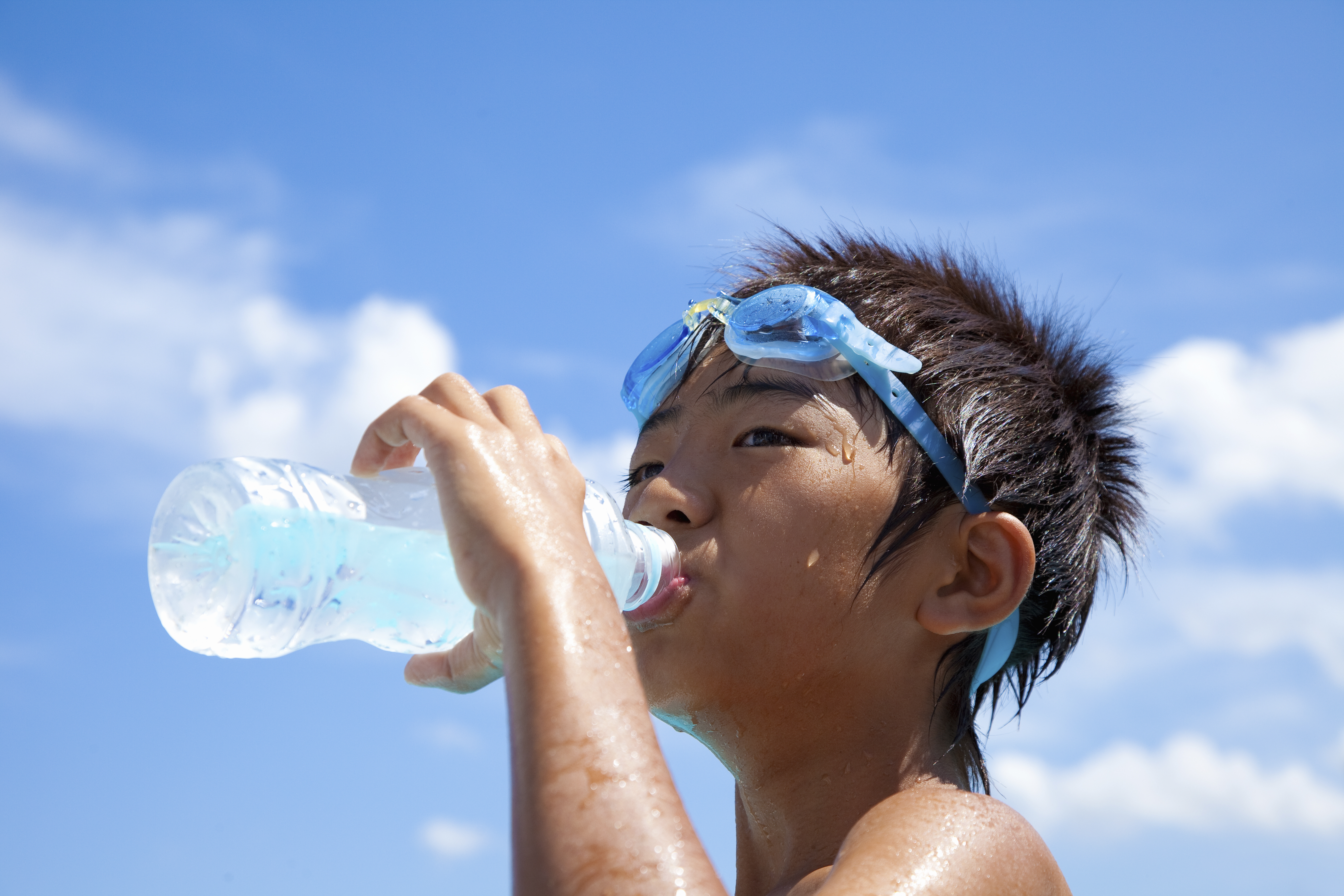From basketball and football camps to typical outdoor activities like surfing, swimming and skateboarding, longer days and plenty of free time give kids the opportunity to take part in a variety of physical activities during the warm summer months.
But warm weather and increased physical activity also puts kids at risk for dehydration.
 Active children and young teens use up more energy doing the same activity as older adolescents and adults – while producing up to twice as much heat. Excessive dehydration can increase risk of heat-related illnesses such as heat cramps, heat exhaustion and heat stroke. In fact, a significant number of kids and student athletes are hospitalized each year due to heat-related illnesses. If not treated quickly or appropriately, severe dehydration can result in kidney failure, a coma or worse.
Active children and young teens use up more energy doing the same activity as older adolescents and adults – while producing up to twice as much heat. Excessive dehydration can increase risk of heat-related illnesses such as heat cramps, heat exhaustion and heat stroke. In fact, a significant number of kids and student athletes are hospitalized each year due to heat-related illnesses. If not treated quickly or appropriately, severe dehydration can result in kidney failure, a coma or worse.
Keep in mind that most kids don’t instinctively drink enough fluids to replace water losses, and many are already dehydrated before sensing thirst. This is an important point that bears repeating: Thirst is not a reliable indicator of dehydration.
Kids should drink cool fluids before, during and after exercise that exceeds one hour, even if they don’t feel thirsty. The key is to hydrate one to two hours before exercise, drink five to nine ounces every 20 minutes during exercise, and continue to hydrate within two hours after exercise. You can gauge the amount of the fluid consumed by “gulps.” A single gulp roughly equals about one ounce.
Keep an eye out for symptoms of dehydration such as dry mouth, fatigue, headache, confusion, lack of coordination, nausea, weakness or faintness, and be ready to seek medical help if symptoms persist after hydration. Be prepared, know the warning signs and if you think someone is at risk, dial 911 immediately.
And for more information, check out the Hydrated & Healthy awareness campaign developed a few years back by the Orange County Department of Education in collaborated with the Orange County Fire Authority and other local agencies and schools. The campaign was designed to educate the public about the importance of youth staying hydrated during physical activity, especially in warmer weather.
